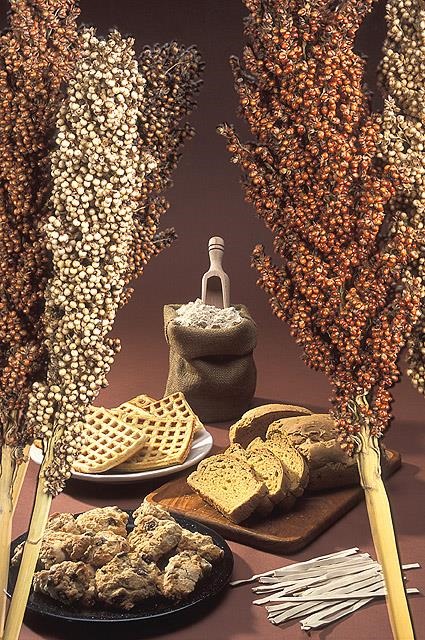Fortunately, Helm and a team of Purdue University scientists led by Demeke Mewa have begun to close this gap. They identified a disease-resistance gene that orchestrates a series of defense responses to early infection by the anthracnose fungus, preventing its spread to the rest of the plant and grain heads.

ARS and Purdue University scientists identified a gene that could help sorghum withstand the fungus that causes anthracnose disease
Additionally, sorghum plants carrying the resistance gene, known as "ANTHRACNOSE RESISTANCE GENE 2" (ARG2), successfully withstood the fungus even when greenhouse temperatures were increased to 100 degrees Fahrenheit (38 degrees Celsius). This temperature stability could be a potential boon for sorghum production regions of the world where growing season temperatures can reach those levels.
The team also determined that ARG2 helps make ("encodes for") a protein that is concentrated in the plasma membrane of resistant sorghum cells. There, it acts as a kind of intruder alert that's triggered by certain proteins used by the anthracnose fungus to infect the plant.
"These results significantly advance our understanding of how sorghum detects fungal pathogens and opens the door for engineering new disease resistances against plant pathogens of cereal grains," the team writes in an abstract summarizing their findings in The Plant Journal paper.
ARG2 and its protein don't protect sorghum from all races of anthracnose. However, combining ARG2 with other similar genes could help broaden that protection—either through conventional plant breeding methods or biotechnological ones. With ARG2's discovery, scientists now have a key to unlocking a fuller understanding of how the mechanisms of anthracnose resistance work and making the best use of them as a disease defense that growers worldwide can count on.
In addition to Mewa and Helm, the The Plant Journal paper's other authors are Sanghun Lee, Chao-Jan Liao, Augusto Souza, Adedayo Adeyanju, Damon Lisch and Tesfaye Mengiste—all of Purdue University.
Source : usda.gov